Table of Contents
Welcome to the UltrabookReview guide to… binding keys?!
I know what you’re thinking. “Do we really need a guide on how to bind keys?”
Please hear me out: I love books and I love film, but I’ve become an even bigger fan of the medium of video games when it comes to crafting impactful experiences. Alien: Isolation, Deus Ex, System Shock 2, Resident Evil 4, Eternal Darkness, Katana Zero, Mass Effect, Amid Evil, Unreal, and Marathon are just a few titles/series that I would happily compare with the experience of reading Austin, Asimov, Camus, Dostoevsky, Orwell, Hemmingway, Tolkien, Tolstoy, Vonnegut, and the like.
A key reason for this is that games are a medium where the audience has a level of agency: they can make choices that have consequences. In turn, this allows for unparalleled immersion and increased impact on the player. The fact that games require the audience to assume varying levels of control is precisely why the topic of human interface/controls for games is worth discussing.
The Importance of Controls to Gameplay
If you’re still skeptical about the impact controls have on a gameplay experience, think about your favourite games in different genres. A key design element of a survival horror game is a sense of vulnerability and Resident Evil 1 (1996) and RE2 (1998) achieved this through a variety of means, including fixed camera perspectives, uncancellable animations, low character agility, and intentionally clunky “tank” controls. The games were designed to make combat with the zombified denizens of Raccoon City difficult, resource intensive, and generally high risk, which contributed immensely to the feeling of being alone, threatened, and on the razer’s edge of survival.
Looking at Resident Evil 4 (2005), we can see how the design changes to the series resulted in a significantly different gameplay experience over its predecessors: combat was now the primary gameplay experience to be had, and as a result the camera now followed Leon’s gaze from over his shoulder; fine aiming controls were introduced; and weapons and ammunition were more plentiful.
RE5 (2009) was even more combat-focused, and as a result, for the first time ever in the RE series, the characters could now strafe left and right! What could be next, making Chris Redfield able to punch a four-ton boulder?

Chris Redfield punching a boulder. (Game: Resident Evil 5)
To drive the point home, let’s compare the controls of Resident Evil 7 (2017) to Doom Eternal (2020). RE7 is one of the best survival horror FPS games ever developed, and while both games are first-person shooters, they couldn’t be further apart in the manner the player’s avatar responds to inputs.
If you aren’t familiar with either game I suggest watching a couple of minutes of the following gameplay videos first:
So, what would happen if we were to exchange the player controls RE7 with Doom: Eternal’s?
Ethan sits at the Baker family dinner table with Marguerite trying to force-feed him a spoon of God-knows-what. He looks down at the restraints tying him to the chair, then snaps them off like old floss with the slightest effort of his ham-like fists. He grabs the spoon out of Marguerite’s hand and slams it through her forehead, popping open her skull like a plump grape. He dashes towards Jack and Lucas faster than you can say “fungus” and unleashes a furious left hook that knocks Jack through the kitchen window and vaporizes Lucas into a pink mist. Ethan turns to grandma and grunts, “I see you have big guts…”
In contrast, the Doom Slayer probably wouldn’t even get past the opening sequence of Doom (2016):
The strangely familiar voice echoes in the Slayer’s head from a place that seems both impossibly far away and intimately close: “They are rage, brutal, without mercy. But you. You will be worse. Rip and tear, until it is done.”
The Slayer opens his eyes and tries to bring his new reality into focus. Where is he? His hands are shackled, and he is only able to sit up partially. Shambling figures just beyond his ability to focus on fill the room. He tries to break his bonds, but he is too weak. The figures close in and lunge, and he is too slow to avoid the shredding of their claws and the gnashing of their teeth. Within seconds, he is devoured alive and screaming. Only the shackled hands of the Slayer remain.
The point I’m getting at is that the way the character in a game handles is inseparable from the gameplay and the experience the player will ultimately have, and this is all part of the design process. And, if a game is properly designed, its configuration options for control should have been meticulously chosen to further the title’s gameplay: Quake (1996) famously did away with a “use” key, and that was likely a choice made to help focus the experience on the blistering movement speed and frenetic combat. Deus Ex (2000) on the other hand, by default, bound “use” to the right mouse button, despite the weapons having alternate ammo types, laser sights, and scopes, because the gameplay involves lots of interaction with the world and its inhabitants (not to mention explosive barrels). In fast-paced competitive battle royale shooter Apex Legends (2019), a key gameplay mechanic is the slide, accomplished by crouching while sprinting, and so there are buttons for toggling crouch as well as crouching only while they are held.
The mechanics of Apex Legends bring me to my next point, which is that the physical sensation of interacting with the controls (be they keyboard, mouse, or controller) of a game directly affect the sensations the player experiences. The mechanical difficulty of managing sprinting and sliding in Legends and other FPS titles leaning heavily on movement (such as 2020’s Ultrakill or 2008’s Mirror’s Edge) contributes to making the player feel a sense of athleticism and enjoyment.
And that is why the way one sets one’s controls matters a great deal more than most people would first think.
Consider Psychology and Anatomy When Setting Your Bindings
The reason I started writing this guide was because I found myself confused by my own bindings. For a little background, I use a Logitech MX Master 3 (Amazon link), which is a great Wi-fi/Bluetooth wireless mouse with internal rechargeable battery. The MX Master 3 has left and right clickers, vertical and horizonal scroll wheels, a gesture button, and two small side buttons that I’ll call “T1” and “T2”.
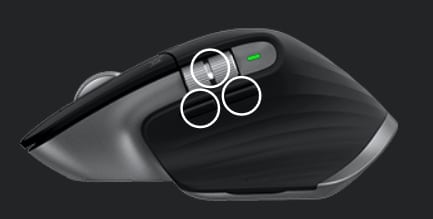
The Logitech MX Master 3, with horizontal scroll (top) and T1 (left) and T2 (right) buttons highlighted.
In co-op wave-based zombie FPS Killing Floor 2, there is a melee class known as Berserker. KF2’s melee combat demands several important actions: light attack, heavy attack, block/parry, and bash. I figured it would make sense to bind all these actions to the mouse, because blocking/parrying is a timing-sensitive action it needs to be bound to an input that is as much second-nature to press as LMB/RMB. So, I bound LMB to light attack, RMB to heavy attack, T2 to block/parry, and rebound bash from my “V” key to T1. The problem was, while parrying, light, and heavy attacks worked great with my bindings, I couldn’t for the life of me bash when I needed to. In even the most slightly stressful situation such as being cornered or grabbed by zombies, I would keep hitting “v” to bash to get them off of me, despite having used these bindings for over six months. For whatever reason, my brain wouldn’t accept T1 as a logical binding to bash some zombies. Why?
I felt that RMB, LMB, and T2 were all accessible from the natural position I kept my hand in while using the mouse, so I examined my hand more closely while playing and was able to identify four issues: (1) I was used to “bashing” in games using v or b, having used that bind for probably a decade or more; (2) to press T1, I needed to shift the weight on my hand just a few millimeters forward; (3) while clicking RMB/LMB/T2 required nearly no movement or energy, to make that shift forward to press inward with the tip of my thumb required a significant flex of the muscles attached to the radius (the thumb-side of the arm, see below); (4) once I moved my hand forward to bash using T1, I was unable to articulate my hand and other fingers as well as I had from my hand’s “home” position on the mouse.
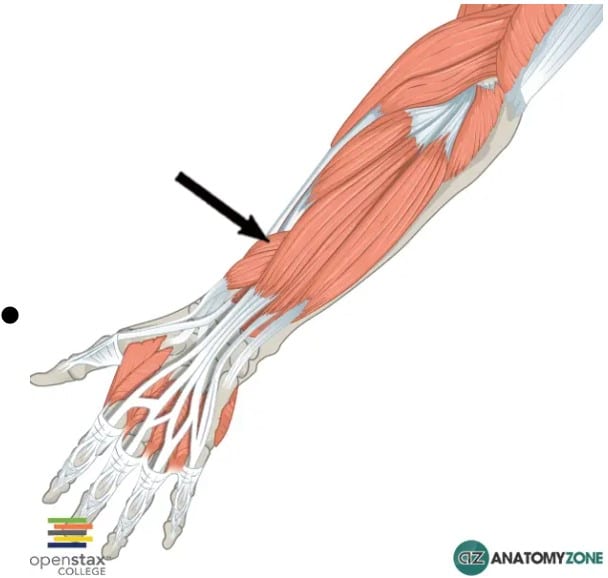
There are a number of muscles that move the thumb, but abductor pollicis longus is the one that I found most fatigued by this binding.
In contrast, going back to the “v” key worked like a treat, not just because I was used to it, but because the panicked feeling of being in a tactically bad situation seemed to encourage the outward-and-downward motion of my left index finger hitting the v key, not to mention the fact that V is close to the existing cluster of movement keys my left hand made its home. So, even though my brain initially decided rather logically that it made sense to bind “bash” to the T1 mouse button, my brain’s existing wiring and the economy of motion of my anatomy both played overriding roles. I conclude that there are a few principles to consider when binding keys:
- The action of hitting the binding must be mechanically feasible.
E.g., If WASD are used to move, spacebar to jump, and “c” to crouch, it would be physically impossible to move diagonally right while crouching
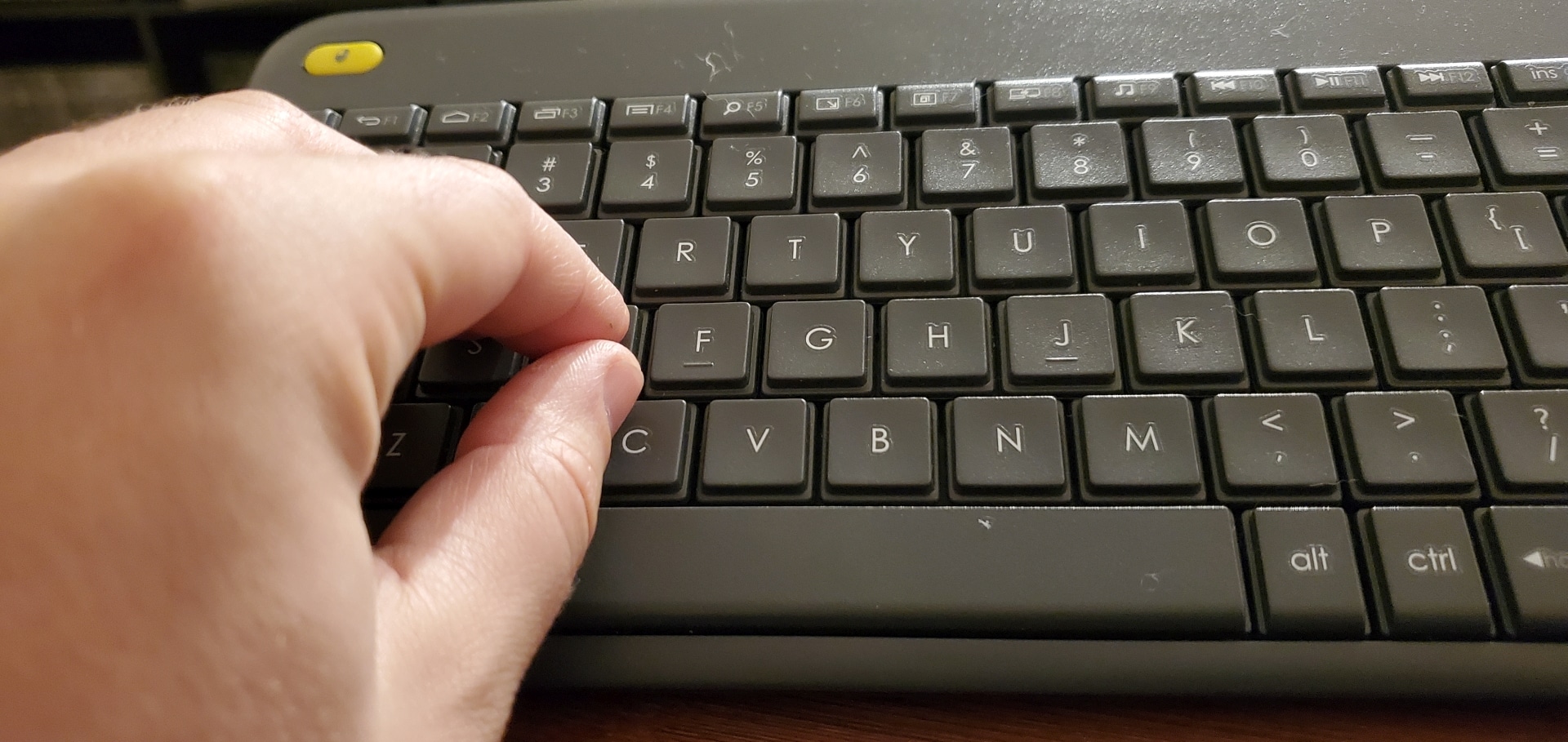
Attempting to move in a right-diagonal using WASD while crouching with “c” causes severe injury or loss of life.
- The more frequent the action is required, the more mechanically efficient the binding should be for the player.
E.g., clicking the left mouse with an index finger button requires less energy than pressing “/” with one’s pinky.
- The more crucial the action is to gameplay (missing it causes a fail-state), the player should more accurately and consistently be able to press the binding.
E.g., if it’s a button used for QTEs like Resident Evil 4, failing to hit the binding in time would result in the player’s death.
- The more history the player has using a binding for a given action, the more difficult it will be to learn a new binding.
E.g., if spacebar has always been used to jump and “e” has always been bound as “use”, swapping bindings so that the spacebar is “use” and “e” jumps will likely result in the poorest performance and maximal frustration for the player.
Should you even re-bind your keys at all?
This probably sounds a bit silly, but I think there’s actually a solid argument for not re-binding the default controls of a game in the first place. I have two reasons for this, the first being game design and the second being psychology.
As I alluded to earlier, a well-designed game has a lot of thought put into every aspect of it, and all aspects of should support the game’s foundational concepts and create a congruent, coherent, and cohesive product. In other words, graphics and gameplay should match the tone and themes of the story, which should all match the audience the experience is pitched at. The Battlefield series focuses on competitive wide-scale combat for the (presumably) 18-34 male demographic who are interested in modern military combat, and its graphics and controls/gameplay reflect that. Overwatch (2016) is designed to be competitive and thus has relatively tight gameplay and controls with a high skill-cap, but it’s designed to appeal to more casual players as well, and its brightly-coloured and stylized graphics and character classes for different play styles reflect this broader audience.
Note that I’m not saying that all games actually do have this level of thought put into their design, and many games that are designed in boardrooms with the help of focus groups and professional market researchers fall notoriously short as experiences precisely because of this. If Call of Duty: Vanguard (2021) had half as much effort put into its gameplay as it did creating a diverse cast of characters to market to people who aren’t even the target audience, it wouldn’t have fallen so flat as it did in reviews (and that’s not that there’s anything wrong with trying to make a game appeal to a wider audience per-se, but you need to create an engaging experience first). Similar to a good film, in a good game, nothing should be there by accident, and all choices ought to support the intended experience; this extends to the controls as much as it does the graphics, story, or gameplay.
The second major reason you might not want to rebind your keys right off the bat has to do with psychology and cognition. Rebinding the keys is, effectively, controlling one’s environment to suit one’s preferences. There’s nothing wrong with this in itself, but let’s look a little deeper at the implications. We tend not to be comfortable with new things (such as key bindings or gameplay elements), and our first instinct is to harmonize that new thing into something that we already understand. Why? Because the process of understanding something new is also known as learning, and learning is not easy for many people. To put it another way, remapping keys is a way to avoid learning something new, and, again, there’s nothing wrong with that in and of itself, but we should consider why they were mapped that way by default to begin with, and why we are playing a new game in the first place.
And why are we playing a new game? Psychologically speaking, games are microcosms of life, and we play games as a way of having experiences. Those experiences might include a story, hand-eye skills, teamwork, emotional control, memorization, or analysis, but the short of it is that when we are playing a new game it is for the sake of experiencing something new. Whether we are cognizant of it or not, part of that experience is learning new controls. If we start off by mapping the new controls to our old, comfortable ones, isn’t that approaching a new experience with the wrong mindset? What if Metroid Prime (2002), allowed the user to rebind the controls to control the same as Halo: Combat Evolved (2011), or RE:4 controlled like Max Payne (2001)? You would be missing out on part of the experience.
It’s for these reasons that I cautiously suggest that maybe we shouldn’t always be rebinding the default keys of a game to our preferences without a second thought — we may be unknowingly changing the experience we would otherwise have.
Conclusion
So there you have it, from both sides! When rebinding your keys, be sure to consider (1) the physicality the key-combination requires, (2) the frequency, and thus the and energy efficiency of the action required by you of the game, (3) the risk associated with failing to press the bind consistently, quickly, and accurately, and (4) one’s muscle memory and history with the binding and any other associated in-game actions in the past.
Or, maybe don’t rebind your keys the next time you get a new game at all — you might be surprised at the experience.




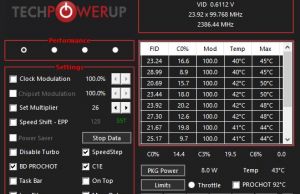

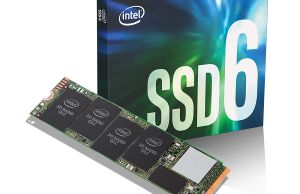






adam wind
November 10, 2021 at 4:21 am
Don't forget all the cheats available on PC!!!!
Douglas Black
November 10, 2021 at 4:23 am
Haha, yes indeed!
Sam Medley
November 24, 2021 at 4:31 am
Now you see why speedrunners will rebind keys to weird configs in games. For example, in Half-Life 2, there's a technique called Accelerated Backward Hopping (ABH). The character continues to accelerate and momentum indefinitely when hopping backward, allowing them to hit ludicrous speeds and launch off level geometry, skipping much of a map or even rocketing out of bounds. To do this, many speedrunners rebind the jump button to the mouse wheel for a smoother, quicker, and more responsive jump since the trick requires precise timing.
Great article, Doug.
Douglas Black
November 24, 2021 at 5:23 am
Thanks for your comment, Sam, that is a really interesting angle that I wouldn't have thought about. Makes me think back to the days where I was reverse-rocket jumping everywhere, and I now remember that I used "e" for jump instead of Space in Quake 3, and it caused problems for me when running backwards diagonally and jumping… If only I had a time-machine, younger Douglas!